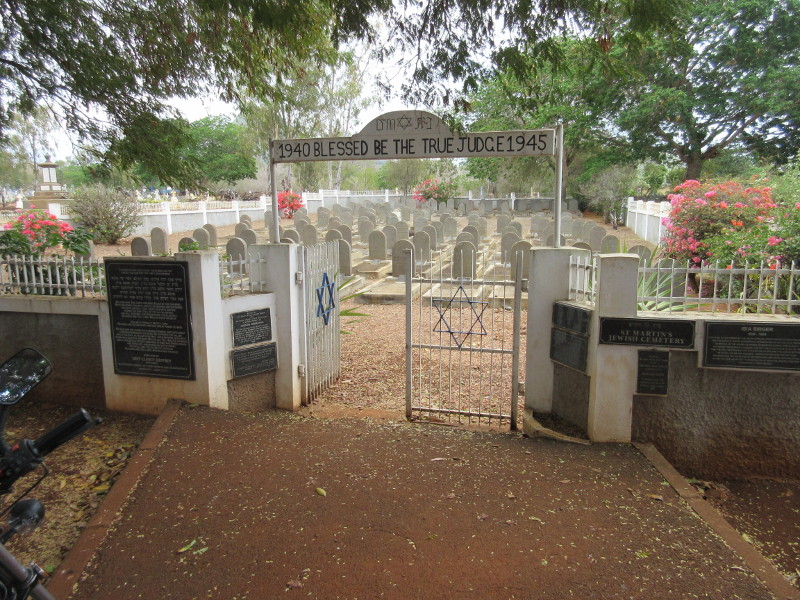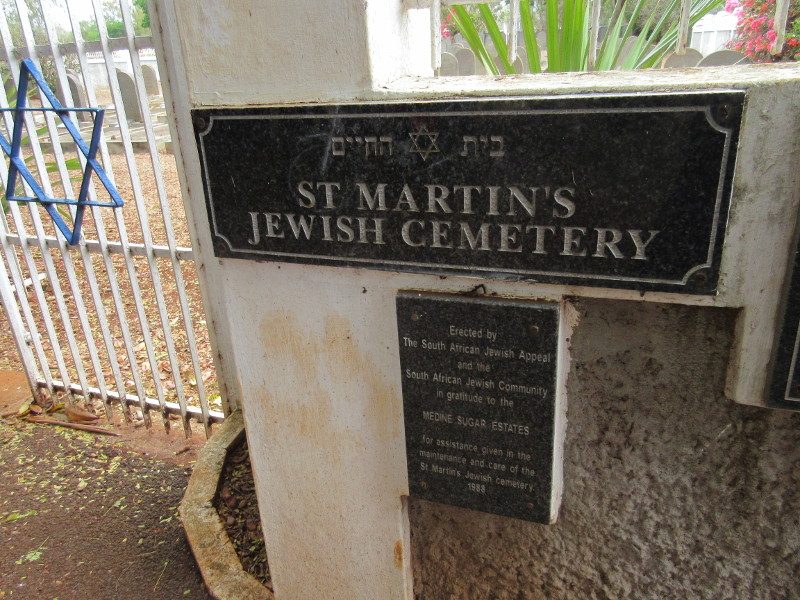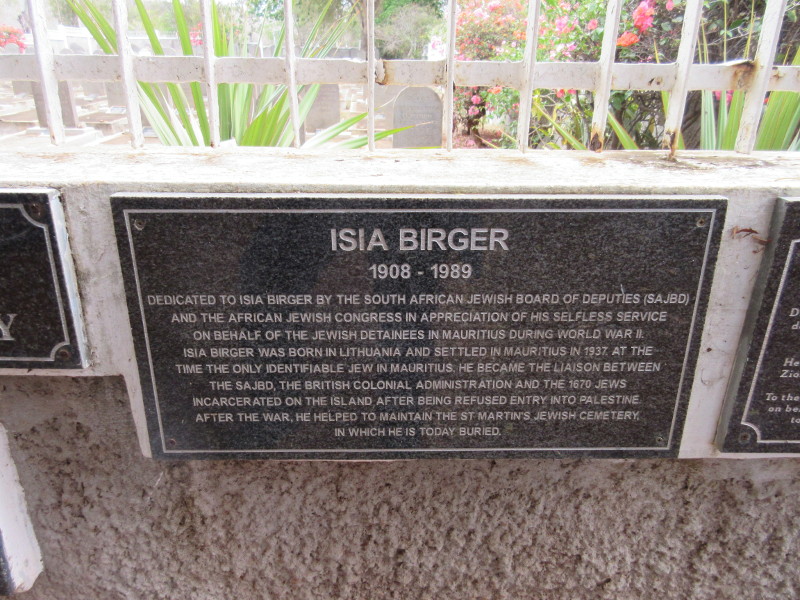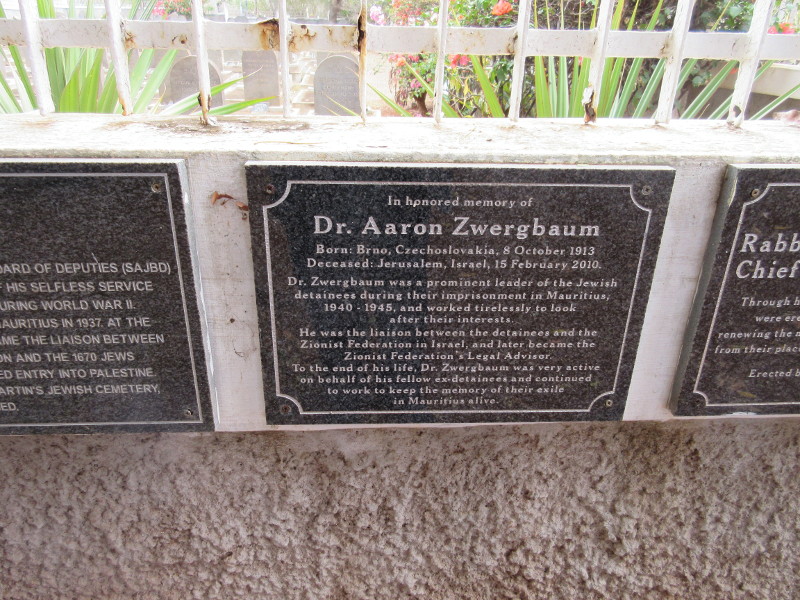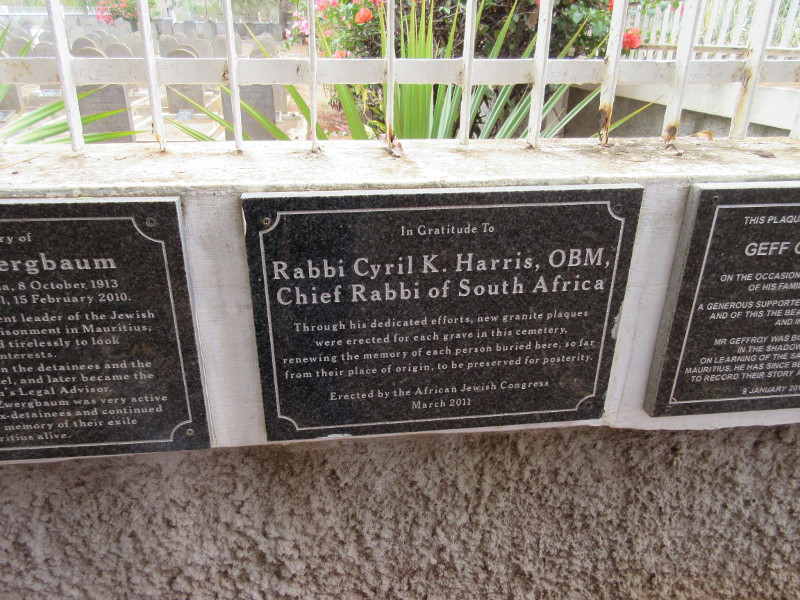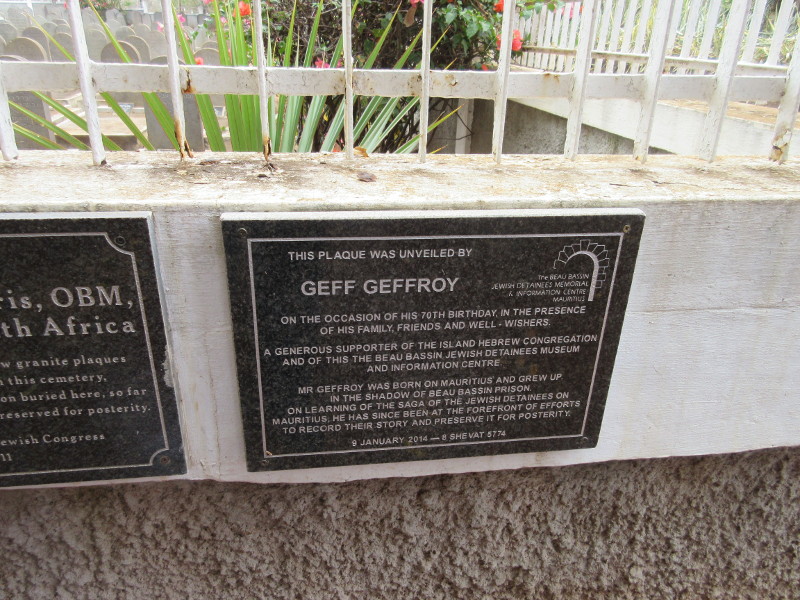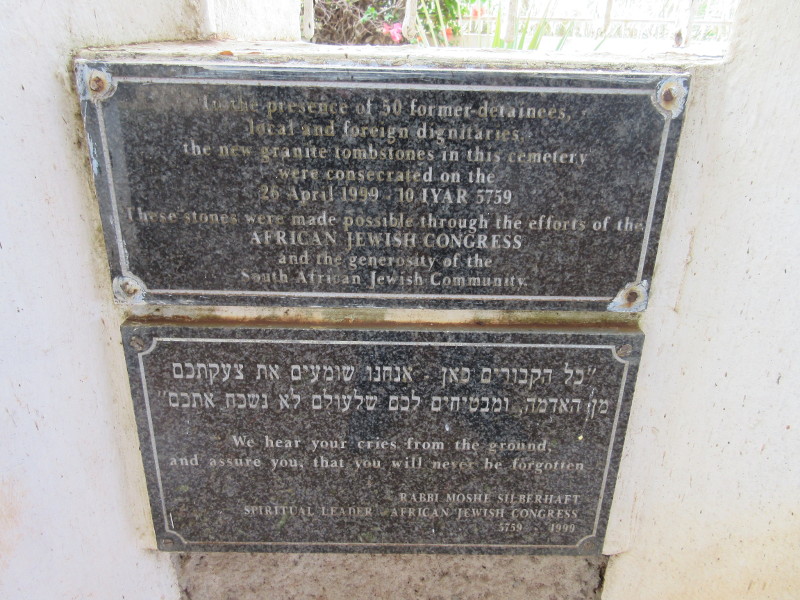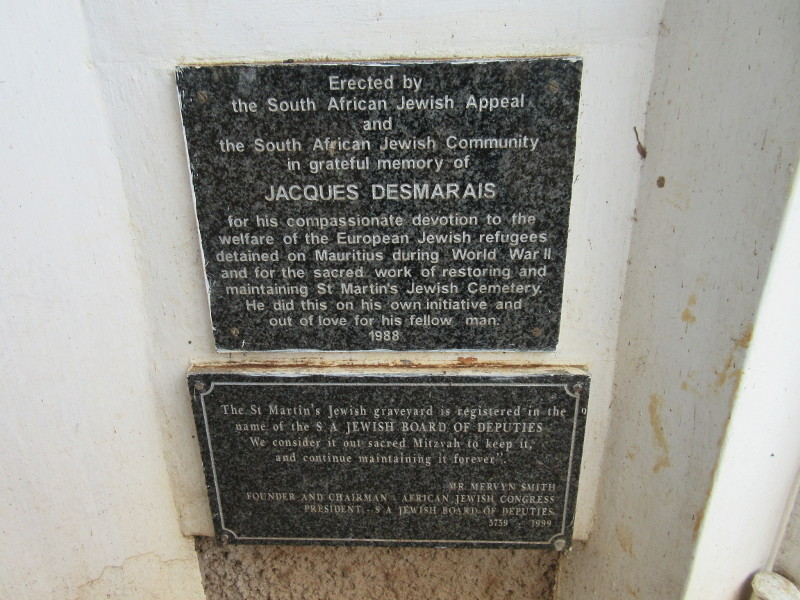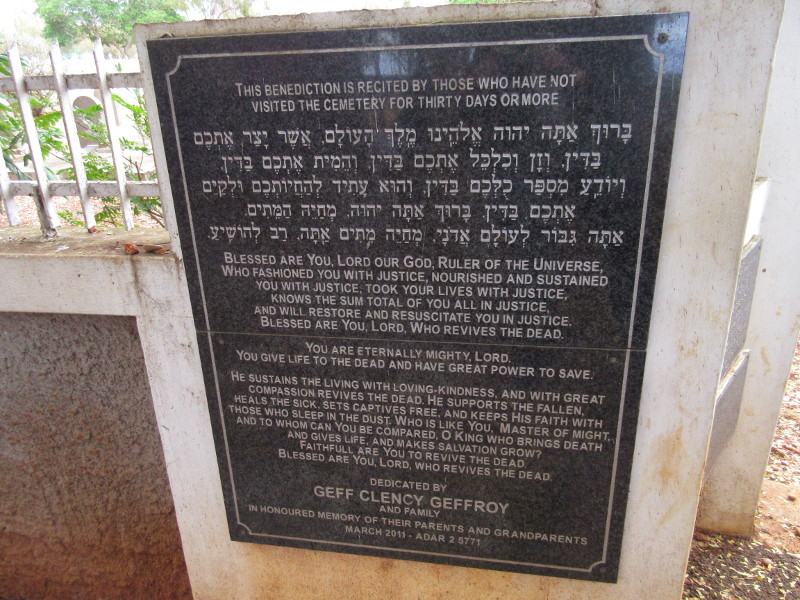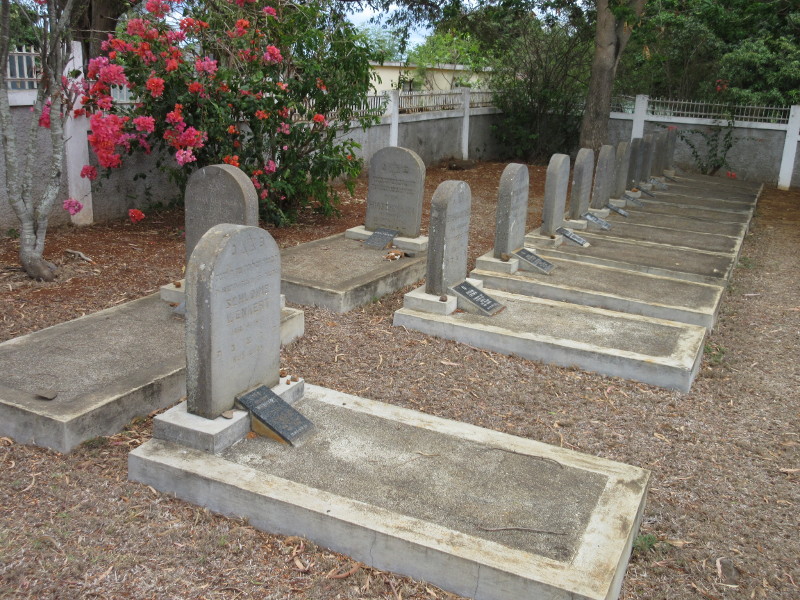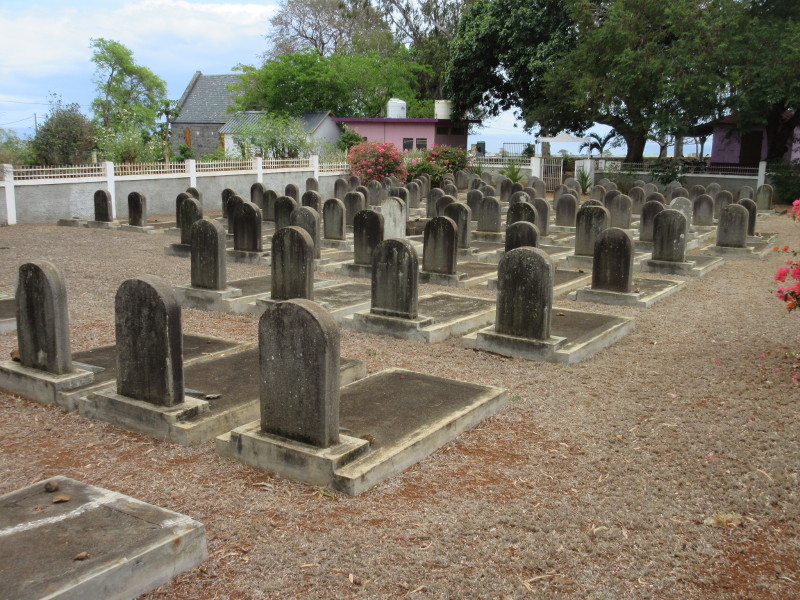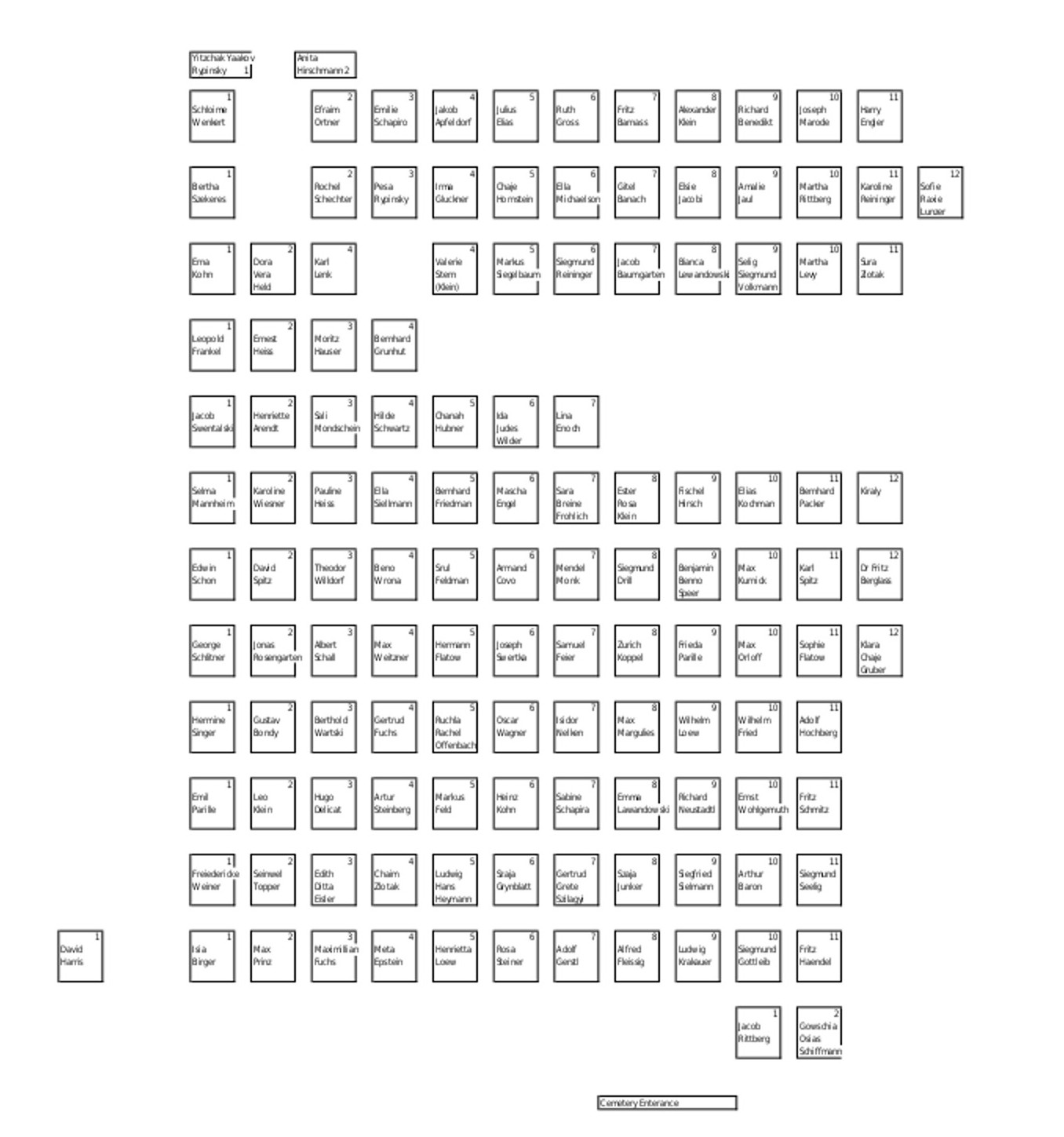A village in the west of Mauritius, to the southwest of the capital Port Louis. list of all Jews buried in Mauritius. [July 2007]
JOWBR burial list. [July 2009]
In 1946, the Board of Deputies gained ownership of the Mauritius Jewish cemetery in Bambou. Jacques Desmarais, a non-Jew Mauritian, voluntarily maintained the cemetery. Jewish refugees from East Europe (Poland in particular) had tried to reach Palestine in the early 1940s to escape the Nazi persecution. They travelled down the west coast of Africa, passed the Cape of Good Hope, and entered the Indian Ocean. They were taken by the British at this point, brought to Mauritius, and made to stay there until the end of the war. Some of them died and were buried in Mauritius on a ground they share with Muslims. In 1958, the Board of Deputies along with a individual sponsors repaired the Jewish section of the cemetery. Other major restorations were carried out during the 1980s, 2000, and 2001. On April 26,1999, Rabbi Moshe Silberhalft and the Congress with 50 former refugees again restored and consecrated the cemetery. Another special ceremony was held in May 2001 by the South African Jewish community to unveil 66 graves. History. About 40 Jews lived on the island al though they are unrelated to the WWII refugees. [March 2009]
"Three kilometres north of the village of Bambous, in the shadow of the Corps de Garde Mountain, is the St. Martin Cemetery, where 127 identical tombstones mark the graves of some of the Jewish refugees from Eastern Europe who were refused entry to Palestine by the British in 1940. They were shipped to Mauritius, but conditins were so poor in the refugee camp where they were retained until the end of the war that many perished." Source: David Shulman - Seven Days in Mauritius by Shaun Adey and Fiona McIntosh page 52 [March 2009]
St Martins Cemetery: In November 1940, the steamer "Atlantic" with approximately 1,700 Jewish refugees arrived at the port of Haifa, in the British mandate of Palestine. Since the refugees had no proper immigration certificates, the British authorities considered them as "illegals". In Haifa Harbor, at the time was the large passenger liner "Patria" with about 2,000 more "illegals" on board having arrived earlier on the "Pacific" and the "Milos". The British government decided to deport them, together with the passengers of the "Atlantic", on the Patria. However, before most of the passengers of the Atlantic had been transferred, the Patria capsized after sabotage by the Jewish underground. Over 200 of the refugees drowned. After this disaster, the British government allowed the surviving refugees from the Patria to stay in Palestine, but about 1,560 refugees, who were still on the Atlantic, were deported to Mauritius, where most of them spent the war years in a detainment camp. There were three groups in the camp; the largest of about 800 people came from Vienna. The others came from Danzig (Gdansk) and Czechoslovakia. After the end of the war, the refugees had a choice of settling in Palestine or returning to their former home countries; the vast majority decided to settle in Palestine. Aaron Zwergbaum published the most detailed factual description of this episode in Yad Vashem Studies, Volume 4, under the title "Exile in Mauritius." A total of 128 detainees died in the Camp of Beau Bassin, 54 of them during the first year. They were laid to rest in the "Jewish section of the cemetery of St. Martin," about one-mile distant from the camp. Before leaving the island, the detainees placed the cemetery under the protection of their good friend, the Anglican Bishop of Mauritius. The bishop had the cemetery cleared of weeds. In 1955 the ex-detainees in Israel learned that the cemetery was in need of repair. They collected money among themselves and remitted it to Mauritius. The cemetery was thoroughly restored in 1958 thanks to a subsidy of the South African Jewish Board of Deputies and to the generosity of a few individuals, among them the French Maurtians Pierre de Comarmond and J. Demarais, who volunteered professional and other services. In more recent times, a committee looks after the cemetery. One member of the committee, Mr. This email address is being protected from spambots. You need JavaScript enabled to view it., was instrumental in personally surveying it and supplying the list of burials. This project could not have been carried out without his assistance and cooperation. Mr. Griffiths can be reached at BCM Ltd., Senneville, Riviere des Anguilles, Mauritius. Source: This email address is being protected from spambots. You need JavaScript enabled to view it. website. UPDATE: In 1999, all the headstones that had deteriorated were replaced with new ones. This restoration work was undertaken and funded by the South African Jewish Congress under the leadership of Rabbi Moshe Silberhaft, its spiritual leader. In the presencee of 50 former detainees, local and foreign dignitaries the new granite tombstones in the cemetery were consecrated on April 26, 1999 -10 IYAR 5759. Most of the website information is incorrect. Source: Henry Wellisch, This email address is being protected from spambots. You need JavaScript enabled to view it. [February 2001]
66 Jewish WWII detainee graves were reconsecrated at a special ceremony organized by the South African Jewish community in May 2001. Nearly 1700 Jewish refugees were denied entry to Palestine by the British and went to Mauritius' detention camp for just short of five years. 127 died there during detention. The South African Jewish Board of Deputies has owned the site since 1946. About 40 Jews live on Mauritius, none withe any connection to the original detainees. Jacques Desmarais, a non-Jewish native of Mauritius, cared for the cemetery prior to its 2000 and 2001 restoration of soft, volcanic rock tombstones. Website but link to article appears to be no longer available [September 2002]
Photos courtesy of This email address is being protected from spambots. You need JavaScript enabled to view it. [November 2016]

